Coronavirus: Lockdowns could be eased sooner, US reaches ‘very sad’ COVID-19 milestone
Prime Minister Scott Morrison has scrapped the long-running Council of Australian Governments in favour of monthly meetings with the premiers and chief ministers.
World
Don't miss out on the headlines from World. Followed categories will be added to My News.
Prime Minister Scott Morrison has scrapped the long-running Council of Australian Governments in favour of monthly meetings with the premiers and chief ministers.
National cabinet was established in March to bring political leaders together to deal with the coronavirus pandemic.
The COAG process has been criticised as too cumbersome and its meetings had become infrequent in recent years.
“COAG is no more,” Mr Morrison told reporters in Canberra.
The national cabinet will continue to meet during the pandemic on a fortnightly basis before moving to monthly meetings in the post-virus period. Most of the meetings will be held via videoconference while face-to-face meetings will occur twice a year.
Mr Morrison said the agenda would focus on jobs.
“Having the groups operate like a fair-dinkum cabinet has been really important,” he said.
The new meetings will operate under cabinet rules, which includes increased security of documents and discussions.
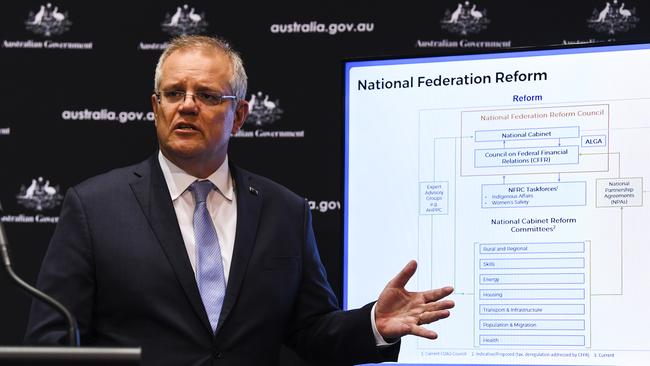
A key reform will be giving the treasurers responsibility over national partnership agreements which cover billions of dollars in funding for services. Once a year, the national cabinet will meet with the treasurers and Australian Local Government Association to talk about broader issues relevant to the federation.
There will also be a series of ministerial groups on a range of specific issues.
Mr Morrison achnowleged that the former COAG meetings were places where “good ideas go to die”.
“When these groups get together, there’s a lot of theatre, a lot of people in the room. And
that can, I think, restrict the genuine reform discussions that you have to have,” he said.
“I mean, on the night before every treasurers and leaders’ meeting I have been to, there is a get together and that is the best conversation you ever have because you’re genuinely talking about the issues you need to and that’s how National Cabinet has operated. We’ve been able to find that candour and collegiality in that new format.”
NSW Premier Gladys Berejiklian said earlier this week national cabinet should be considered to replace the COAG forum which had become clumsy, overly bureaucratic and mired in red tape
Mr Morrison also warned Australians that the COVID-19 recovery plan was to restart the economy – not to eradicate the cases of the virus.
“These are not the goals that we have. If it’s achieved as a by-product then well and good,” he said.
“But the fact that a case or a group of cases may present is not something that should restrict moving ahead and getting progress on implementing the three-step plan and bringing
Australia’s economy back to a COVID-safe environment in which jobs can be restored and livelihoods can be restored.”
The Federal Government is reportedly hopeful that stage three of its lockdown lifting plan can be brought forward from its July deadline, with the advice set to be issued to National Cabinet in the next two weeks if infection rates remain low, The Australian reports.
An infection rate of fewer than 10 new cases each day, which excludes international arrivals in quarantine, is the rough benchmark used by the Australian Health Protection Principal Committee (AHPPC) in its deliberations over further relaxing restrictions, according to The Australian.
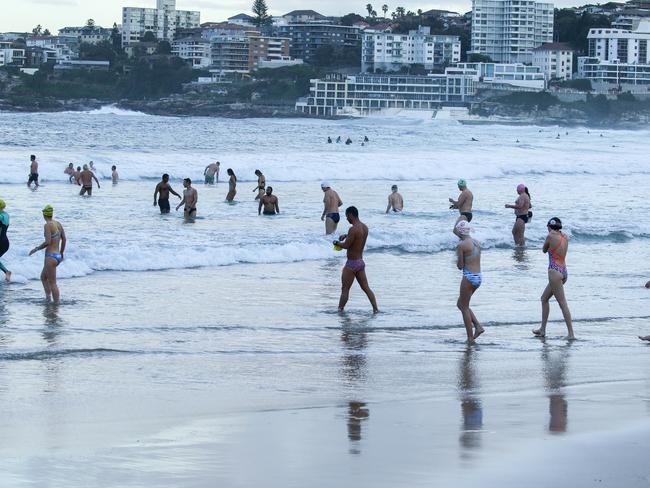
Federal and state chief medical officers, who would also need to give their tick of approval to bring stage three forward, reportedly believe that an infection at that level could be manageable with a broader reopening of the economy.
Should the infection rates remain low for the next two weeks and consensus can be reached among state chief medical officers, it is likely the AHPPC would recommend that lockdown restrictions are eased sooner, The Australian reports, citing senior government sources.
However, a swifter easing of lockdown restrictions is likely to face opposition from Queensland and Western Australia, who have remained steadfast in their decision to keep their borders closed to interstate travel.
TRUMP ‘SORRY’ OVER US VIRUS DEATHS
A day after the US passed 100,000 coronavirus deaths, Donald Trump has acknowledged the grim figure, calling it “a very sad milestone”.
“To all of the families & friends of those who have passed, I want to extend my heartfelt sympathy & love for everything that these great people stood for & represent. God be with you!” Mr Trump wrote via Twitter.
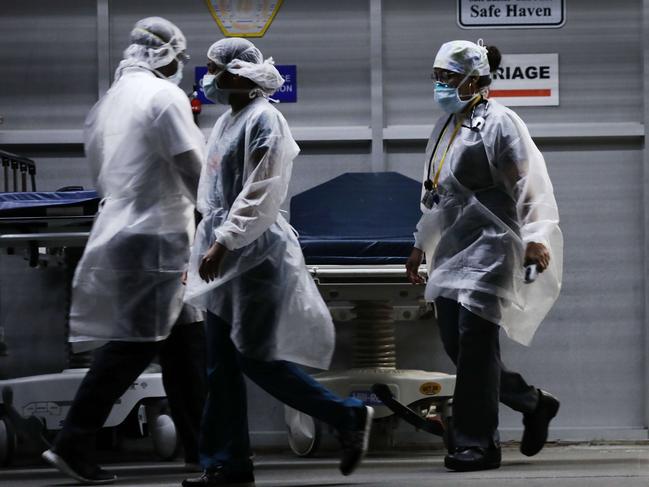
By the time Mr Trump posted his tweet on Thursday (local time), there were at least 100,442 official coronavirus deaths reported in the US, with nearly 1.7 million confirmed cases in the country. The US currently accounts for almost 30 per cent of the reported deaths from COVID-19 in the world.
A White House spokesman a day earlier had issued a statement after the 100,000 tally was reached, saying, “President Trump’s prayers for comfort and strength are with all of those grieving the loss of a loved one or friend as a result of this unprecedented plague, and his message to this great Nation remains one of resilience, hope and optimism.”
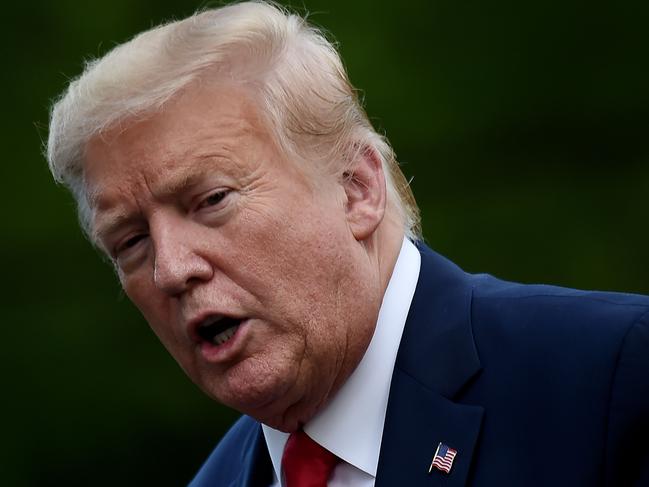
“The American people have always been strong and resilient, and the President is proud of their spirit, courage and determination every single day to defeat this virus,” the spokesman said.
US UNEMPLOYMENT NUMBERS PASS 40 MILLION
It comes as an estimated 2.1 million Americans applied for unemployment benefits last week despite the gradual reopening of businesses around the country, bringing the running total since the coronavirus shutdowns took hold in mid-March to about 41 million, the US government said.
In a glimmer of hope, the number of those now collecting benefits in the US fell for the first time since the crisis began, from 25 million to 21 million, suggesting some companies are starting to rehire.
Still, the US Labor Department report underscored the continuing economic damage from the viral outbreak that on Wednesday hit a confirmed death toll in the US of 100,000, more than the number of Americans killed in the Vietnam and Korean wars combined.
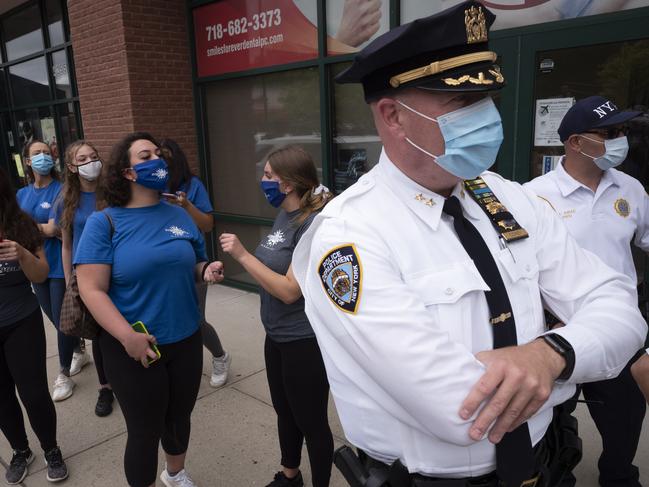
The US unemployment rate was 14.7 per cent in April, a level not seen since the Depression, and many economists expect it will be near 20 per cent in May. First-time applications for unemployment have fallen for eight straight weeks, as states gradually let stores, restaurants, salons, gyms and other businesses reopen and the auto industry starts up its factories again.
“The decline in continuing claims is encouraging, signalling at least some people are finding jobs or are being rehired as the economy is reopening,” said Rubeela Farooqi, chief U.S. economist at High Frequency Economics, a consulting firm. But the number of Americans filing for unemployment is still extraordinarily high by historical standards, and that suggests businesses are failing or permanently downsizing, not just laying off people temporarily until the crisis can pass, economists warn.
“That is the kind of economic destruction you cannot quickly put back in the bottle,” said Adam Ozimek, chief economist at Upwork.
The figures come amid an intensifying debate in Congress over whether to extend $600 in extra weekly federal unemployment benefits, provided under rescue legislation passed in March but set to expire July 31.

Democrats have proposed extending the payments, while Republicans have argued that the extra money could discourage laid-off workers from returning to jobs that pay less than they are getting on unemployment.
Worldwide, the virus has infected more than 5.7 million people and killed over 355,000, with the US having the most confirmed cases and deaths, according to a tally by Johns Hopkins University. Europe has recorded about 170,000 deaths. The true dimensions of the disaster are widely believed to be significantly greater, with experts saying many victims died without ever being tested.
VIRUS CASES JUMP IN INDIA, SOUTH KOREA
Meanwhile, India saw another record daily jump in coronavirus cases on Thursday while Russia reported a steady increase in its caseload even as it moved to swiftly ease restrictions in synch with the Kremlin’s ambitious political plans.
India, home to more than 1.3 billion people, reported more than 6500 new infections, another record daily surge that brought the nation’s total to more than 158,000 infections.
The spike comes as the nation’s two-month-old lockdown is set to end on Sunday.
Prime Minister Narendra Modi’s government is preparing a new set of guidelines to be issued this weekend, possibly extending the lockdown in worst-hit areas as it promotes economic activity.

Earlier this month, the country allowed reopening of shops and manufacturing and resumption of some trains and domestic flights and vehicles’ movement.
South Korea on Thursday reported its biggest jump in coronavirus cases in more than 50 days, a setback that could erase some of the hard-won gains that have made it a model for the rest of the world.
Health officials warned that the resurgence is getting harder to track and social distancing and other steps need to be taken.
And in Russia, high daily numbers of new coronavirus infections underlined the risks of reopening the economy, which has been badly battered by the outbreak.
Earlier this week, Russian President Vladimir Putin announced that Russia will hold a military parade marking the 75th anniversary of the Nazi defeat in World War II on June 24, declaring that the nation has passed the peak of the pandemic that had forced the Kremlin to postpone the celebrations.
The massive May 9 parade marking Russia’s most important holiday was intended to emphasise the nation’s key role in World War II and underline its international clout, with French President Emmanuel Macron and other world leaders set to attend.
The Russian Foreign Ministry said on Thursday that Moscow will now resend the invitations to Macron and others.
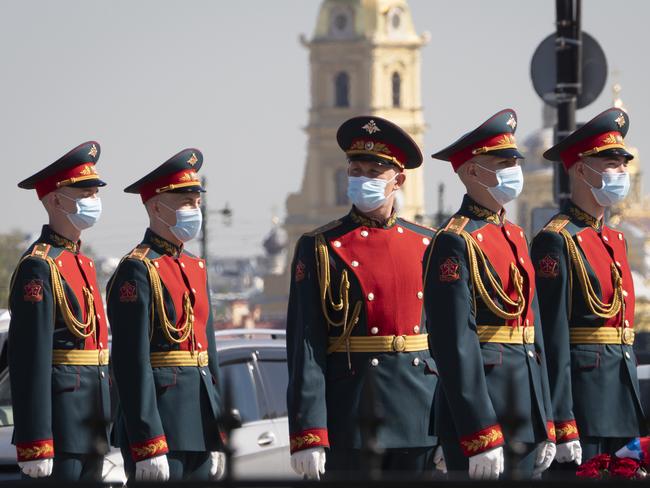
RELATED NEWS
Why this Aussie COVID-19 vaccine might not get off the ground
What we’ve learned from dumping NAPLAN
Worst-hit sectors are hiring again
We’re all in this together: A coronavirus novel
Russian media reported that the Kremlin now also plans to go ahead with another high-priority event on Putin’s political agenda – a plebiscite on constitutional amendments that could allow him to stay at the helm through 2036 if he chooses.
The Russian president postponed the vote from April because of the outbreak.
The government’s anti-coronavirus task force reported more than 8300 new infections on Thursday, about the same as in the previous day and lower than the peak levels of more than 11,000 cases earlier this month.
The total number of infections topped 379,000, the world’s third-largest caseload behind the United States and Brazil.
Russian officials reported 174 new deaths, repeating the highest daily toll recorded two days ago and bringing the nation’s total to 4142.
Some Kremlin critics alleged that the nation’s relatively low mortality of about 1 per cent of those infected might reflect manipulations driven by the authorities’ desire to set a positive environment for both the parade and the constitutional vote.
Russian officials have angrily rejected the allegations, charging that the low toll was a result of sweeping preventive measures, broad testing and efficient treatment.
Moscow, which accounted for about half of all infections, ordered to ease the tight lockdown in place since late March, saying that non-food stores, dry cleaners and repair shops are allowed to open Monday.
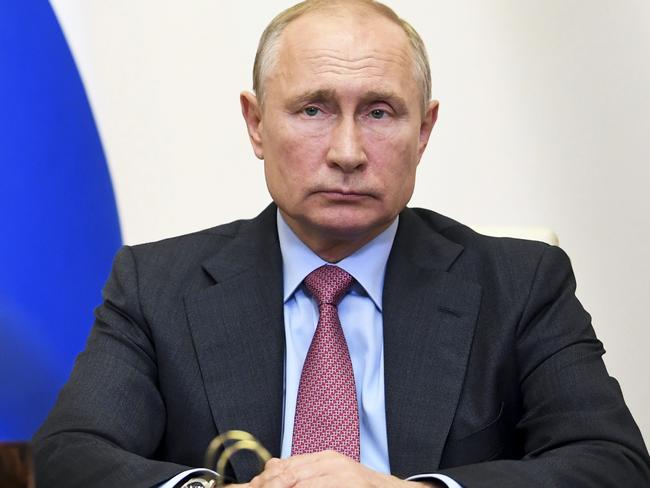
The capital’s mayor also announced that residents will be allowed to walk in the parks with some restrictions and engage in sports in the mornings.
Many other Russian provinces already have eased the lockdowns.
The situation in many other countries also underscores the difficulty in reopening economies.
In the US, Las Vegas casinos and Walt Disney World have made plans to reopen, and crowds of unmasked Americans are expected to swarm beaches over the summer months.
Public health officials predict a resurgence by fall.
Some other nations are seeing improvements. New cases in Spain and Italy have fallen steadily for two months.
China reported just two new cases on Thursday, both from abroad.
New Zealand has reported no new cases for six days and has just eight active cases remaining.
Worldwide, the virus has infected more than 5.7 million people and killed over 355,000, with the US having the most confirmed cases and deaths, according to a tally by Johns Hopkins University. Europe has recorded about 170,000 deaths.
The true death toll from the virus is widely believed to be significantly higher, with experts saying many victims died without ever being tested.
Comparing countries is tricky, given varying levels of testing and that some deaths can be missed.
According to figures tracked by Johns Hopkins, the death rate per 100,000 people is lower in the US than in Italy, France and Spain but higher than in Germany, China, South Korea, Singapore, Japan, New Zealand and Australia.
In hard-hit Brazil, the virus has been spreading into indigenous lands and this week two virus deaths were registered in the Xingu area, one of the biggest reserves in the world.
Those who died were from the Kayapo indigenous group.
The community’s leader, Megaron, told The Associated Press he wants President Jair Bolsonaro and other officials to stop loggers, miners and fishermen from illegally entering the territory, incursions he believes have sped up the spread of the virus.
Originally published as Coronavirus: Lockdowns could be eased sooner, US reaches ‘very sad’ COVID-19 milestone
